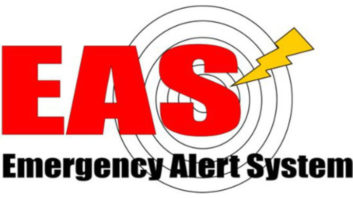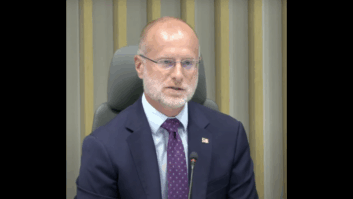 Groups representing broadcasters and internet streaming companies are expressing reservations about how delivering EAS alerts through the internet would work and say the complexities of accomplishing the feat would be exceptional.
Groups representing broadcasters and internet streaming companies are expressing reservations about how delivering EAS alerts through the internet would work and say the complexities of accomplishing the feat would be exceptional.
The FCC issued a Notice of Inquiry earlier this year to explore the feasibility of delivering EAS via the internet and how to leverage the capabilities of the internet to enhance alerting by radio and television broadcasters and cable systems. A review of comments from several groups indicates the complex nature of coordinating multiple technologies to offer advanced alerting in the United States.
The National Association of Broadcasters says “certain technical challenges and open policy questions make it extremely burdensome, and likely infeasible, to update the EAS system to enable alerts to consumers provided through the internet, including streaming services.”
[Read: FCC Will Explore EAS on the Internet]
NAB concludes “pure-play online content streamers are not well-positioned to participate in the existing EAS ecosystem for live streaming feeds or on-demand content.” The trade association adds that radio and TV broadcasters currently are very limited in their ability to offer any real enhancements to online alerts, according to NAB.
“We understand that the only online audio outlets that may retransmit EAS messages are websites and apps while simulcasting radio stations. Broadcasters may do so on their own website or through audio apps like TuneIn or digital media players like Roku TV,” NAB wrote in its comments.
NAB notes that “as a general matter, the streaming feeds at the broadcast station are originated upstream of the EAS encoder/decoder in the programming chain, meaning that an EAS alert is typically relayed only if it occurs while a station’s own programming is broadcast on-air.
“However, if an alert occurs during a commercial break in the on-air programming, when different content is inserted into the online stream, then the EAS alert is not usually retransmitted to the listener or viewer,” NAB commented.
The trade association urges the commission to report to Congress that EAS should not be extended to internet-based services at this time.
The Digital Media Association (DiMA) believes it may be it may be technically feasible to complete some, but not all, steps required for end-to-end transmission of EAS alerts through the internet, specifically, via the music pure-play streaming services offered by DiMA member companies.
“While receiving and processing EAS alerts may be technically possible, however, the national and global nature of these streaming services, which operate as apps on hardware devices or through websites relying on networks these services have no control over to transmit data, makes monitoring for, retransmitting, and delivering EAS alerts to end users infeasible, if not impossible,” DiMA wrote in comments filed with the FCC.
DiMA continues: “Further, for practical and technical reasons, doing so would not advance the purpose of the EAS. Music streaming services do not collect granular location data and, therefore, would not be able accurately target emergency messages to the relevant recipients. Rather than increasing the reach of EAS, streaming services’ involvement will duplicate and possibly interfere with activities of existing participants.”
The FCC in its notice of inquiry noted the apparent challenges of using the internet for EAS alerting, including the large geographic service areas of streaming services and how those companies would monitor alerts from state, territorial and local governments for EAS alerts in Common Alerting Protocol.
Digital Content Next told the FCC the group believes extending the EAS obligations to streaming services would be very complicated from a technical perspective given the number of devices and services where content is viewed or heard.
“For example, consumers can receive content from streaming services on a wide variety of phones, tablets, laptops and televisions. Each of these devices may utilize different kinds of software. Also, software is frequently updated by the device manufacturer, which results in additional diversification of devices,” Digital Content Next commented.
The group, which represents a wide-array of Internet publishing brands like Disney, Bloomberg and ESPN, said ensuring that emergency alerts can be delivered, viewed and heard properly on the myriad combination of devices, software versions and platforms would be immensely complex. “In order to monitor for and deliver EAS messages, streaming services would need to make different adjustments for each kind of device, software and platform,” Digital Content Next wrote.
In addition, streaming services “generally lack local network architecture and are not geographically proximate to their customers,” and “streaming providers would have to reconfigure their technology to have the capability to properly deliver geo-targeted local emergency alerts,” the trade association said.
The FCC is looking at ways to modernize EAS infrastructure after a mandate from Congress to broaden the capabilities of EAS and WEA [Wireless Emergency Alerts] in the United States and improve reliability to prevent false alerts.
Reply comments to the notice of inquiry on the feasibility of updating EAS or to improve alerts through the internet are due June 14.







